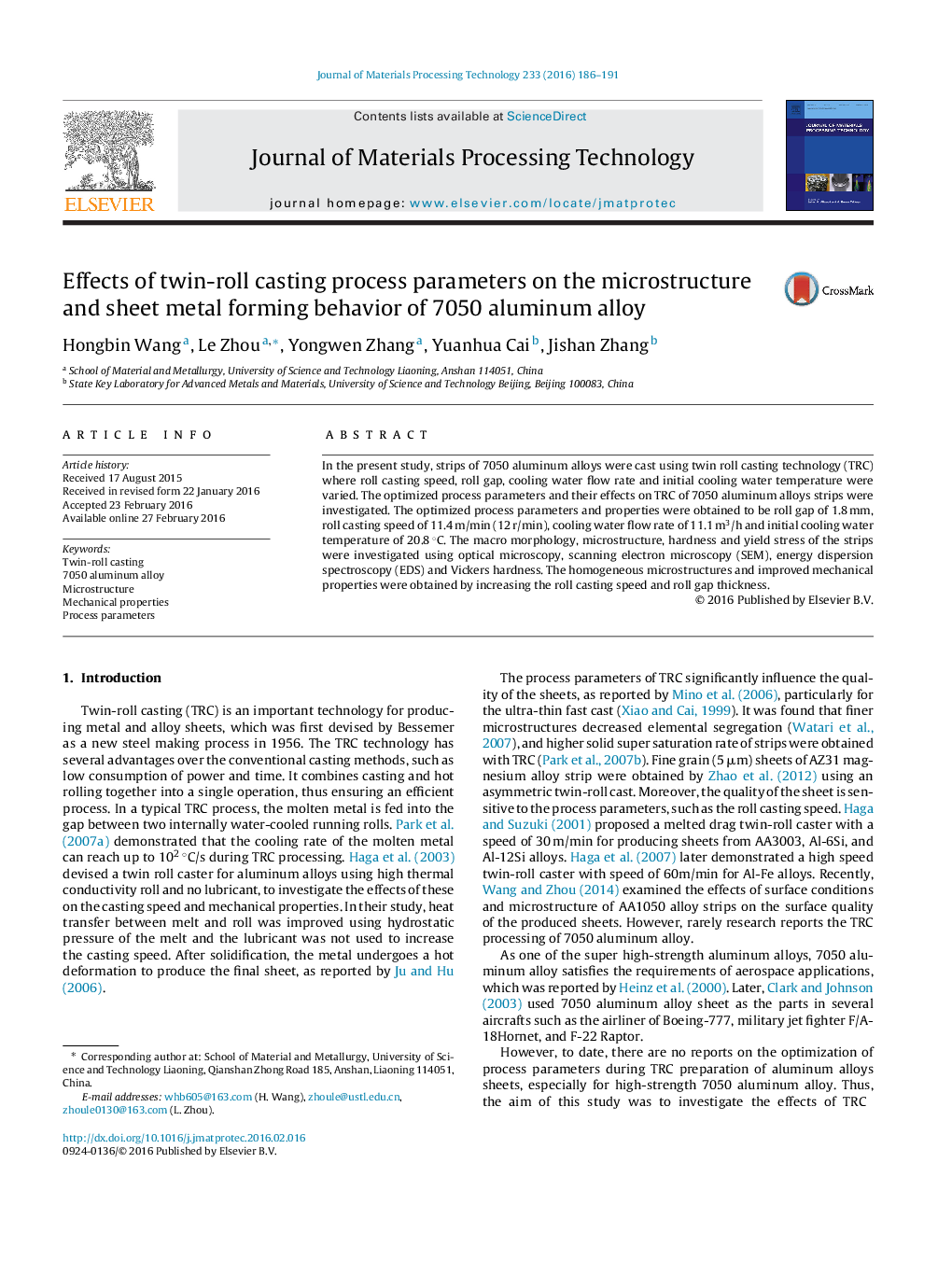| کد مقاله | کد نشریه | سال انتشار | مقاله انگلیسی | نسخه تمام متن |
|---|---|---|---|---|
| 795853 | 1466734 | 2016 | 6 صفحه PDF | دانلود رایگان |
In the present study, strips of 7050 aluminum alloys were cast using twin roll casting technology (TRC) where roll casting speed, roll gap, cooling water flow rate and initial cooling water temperature were varied. The optimized process parameters and their effects on TRC of 7050 aluminum alloys strips were investigated. The optimized process parameters and properties were obtained to be roll gap of 1.8 mm, roll casting speed of 11.4 m/min (12 r/min), cooling water flow rate of 11.1 m3/h and initial cooling water temperature of 20.8 °C. The macro morphology, microstructure, hardness and yield stress of the strips were investigated using optical microscopy, scanning electron microscopy (SEM), energy dispersion spectroscopy (EDS) and Vickers hardness. The homogeneous microstructures and improved mechanical properties were obtained by increasing the roll casting speed and roll gap thickness.
The SEM images and EDS of the 7050 aluminum alloy sheets obtained with the roll gap of 1.8 mm at different rolling speeds. As seen in (a), bulk precipitations were distributed along the grain boundaries and microns sized (0.5–10 μm) particles were observed. Most of the precipitated phases overlapped each other and formed skeletons along the grain boundaries. The coarse second phase is characterized as hard, brittle with no malleability/deformability. In the middle and late stages of roll-casting process, the coarse second phases hardly deformed together with grain, so the large stress concentration appeared around the second phases. Fractures commence from the skeleton of second phases which get separated from the grain boundaries. Hence, micro-cracks are initiated. The formation of micro-crack is harmful to mechanical properties of high-strength aluminum alloys. EDS analysis confirmed that the particles in the grain boundaries are mainly Cu-rich. The copper content (48.36 wt.%) in (a) appeared to be higher than that (d) (21.38 wt.%). The high copper content can reduce the toughness of the alloy and increase the crack propagation rate. The Mg content appeared to be 1.68 and 1.61 wt.% in (b) and (d), respectively. The Cu combined with Mg and Al easily formed Al2CuMg and Al2Cu phases.Figure optionsDownload as PowerPoint slide
Journal: Journal of Materials Processing Technology - Volume 233, July 2016, Pages 186–191
